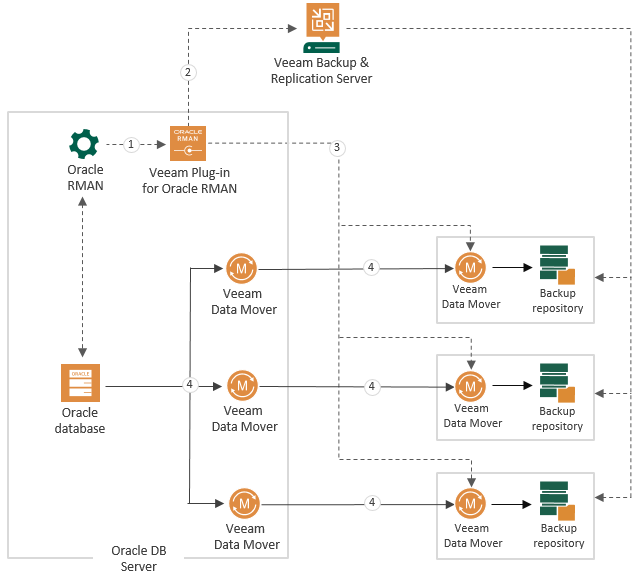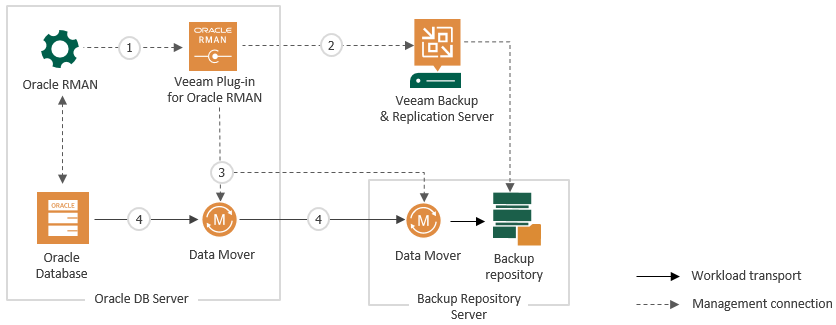 This is an archive version of the document. To get the most up-to-date information, see the current version.
This is an archive version of the document. To get the most up-to-date information, see the current version.How Veeam Plug-in for Oracle RMAN Works
Veeam Plug-in functions as an agent between Oracle RMAN and Veeam backup repository. After you deploy Veeam Plug-in on an Oracle server, you can perform all backup and restore operations in the Oracle RMAN console. Veeam Plug-in will transfer database backups to Veeam backup repository.
When use Oracle RMAN integrated with Veeam Plug-in, the database backup is performed in the following way:
- After you launch a database backup process in the Oracle RMAN console, RMAN launches Veeam Plug-in services.
- Veeam Plug-in connects to the Veeam Backup & Replication server and creates a backup job (if it hasn't been created earlier).
- Veeam Plug-in starts Veeam Data Movers on the Oracle server and on the Veeam backup repository. Depending on the configured limit of RMAN channels, there will be multiple connections started in parallel.
- Veeam Data Movers transport the backup data to the backup repository.
Multiple Repositories Deployment
Veeam Plug-in allows you to add up to 4 backup repositories. The backup process can be run in multiple channels. For each channel Veeam Plug-in creates a separate agent process.

Backup Files
Veeam Plug-in stores backup files in the following Veeam proprietary formats:
- VAB: compressed and deduplicated Oracle RMAN backup files. Veeam Plug-in creates VAB files for all backups (full, incremental, archived redo logs, control file).
- VBM: metadata file that contains information about the backup. VBM files are used by Veeam Backup & Replication to get data about Veeam Plug-in backups.
